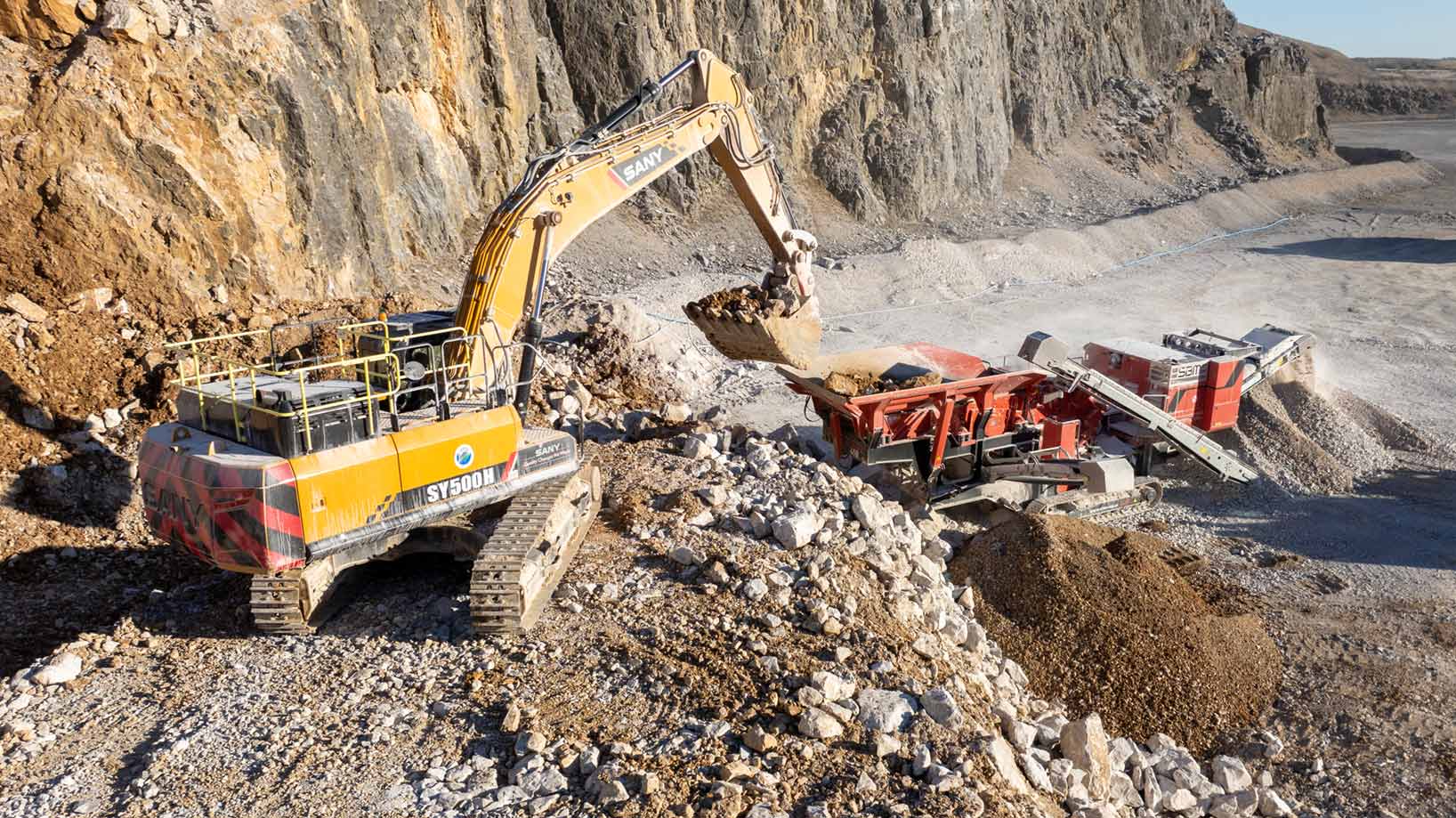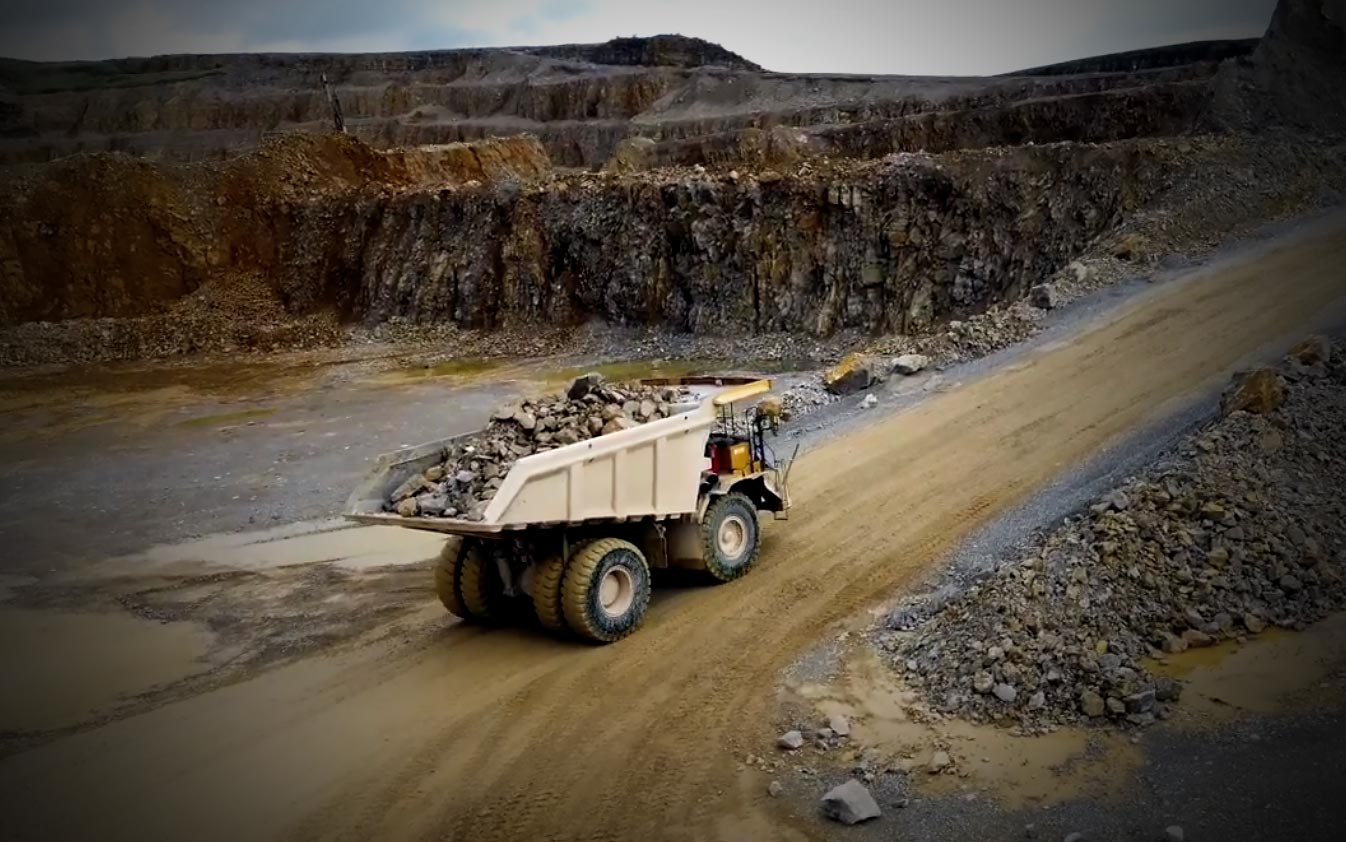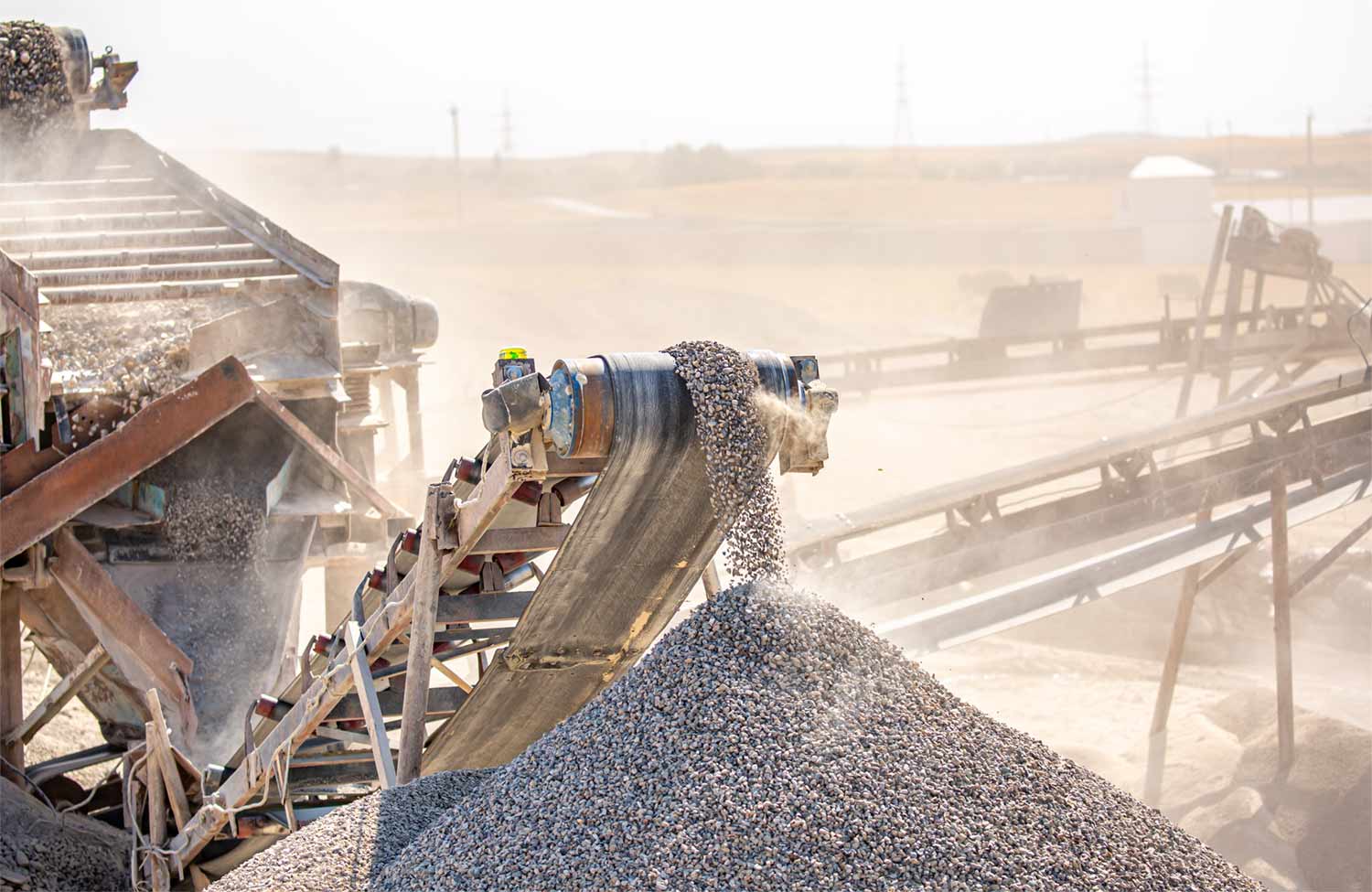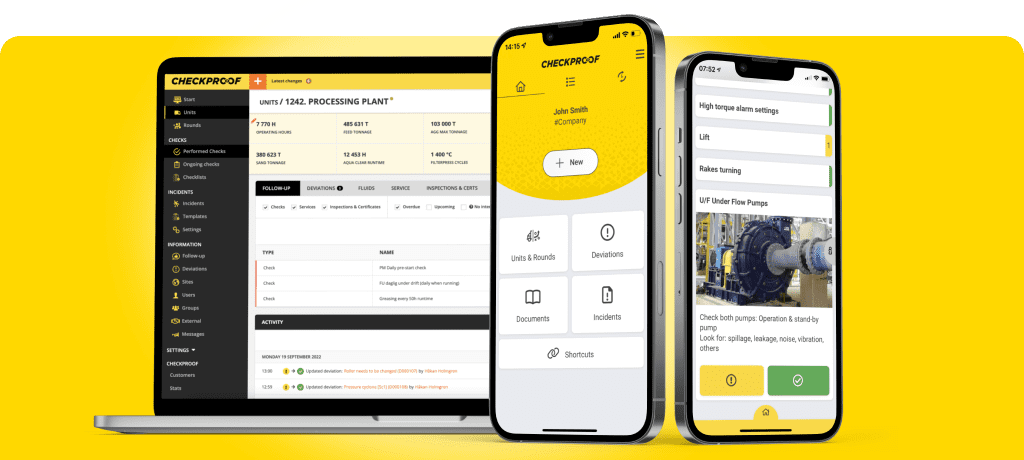Join us at AGG1, St Louis, MO - America's Center Convention Complex: 25-27 March
All of a sudden, a government inspector walks into your plant. Before you could blink, they already noticed that one of your processing equipment is missing its guard. The next minute, you’re served a hefty fine, and your plant is ordered to shut down until it’s fixed. To prevent this from happening again: what steps can you take to ensure your plant is always ready for an inspection?
1. Transfer your policies to a digital platform
Manually keeping track of all your HSE tasks increases the risk of human error amongst your staff, as well as important information falling through the cracks. This also makes it harder to follow up on inspection routines.
To ensure all necessary routine inspections are easily accessible and conducted correctly and timely, it’s essential to transfer all company policies into a digital system. This includes all guidelines, policies, and regulations that are applicable to your company. When you go digital, you can track everything in one centralized location, making it easier to monitor compliance and inspection routines. It also provides you with complete and accurate documentation, which reduces the risk and hassle of compliance issues with authorities.
2. Set up automatic notifications
Let’s say your frontline staff conduct inspection routines throughout the day using a paper checklist. But what happens when they hand in the report at the end of the day, and it turns out they missed a check? It’s not like you can ask them to redo the check when they’re already halfway out the door, right?
In your digital system, set a time range trigger for checks that automatically notify you if they haven’t been conducted within that time window. For instance, you can set a check to be done between the hours of 8-9 am and receive an alert if it’s not completed within that timeframe. By getting notified immediately, you minimize the time it takes to fix an issue or redo a missed check – and thereby reduce the risk of accidents or failure to comply with regulations.
3. Ensure the quality of your routine inspections
One day, a staff member is conducting a routine boundary inspection around your site. As he rounds a corner, he notices a hole in the fence – but thinks nothing of it. However, what he doesn’t know is that you’ve scheduled to blast that day. Imagine if an inspector were to come in that day or, heaven forbid, someone is injured because of the failed inspection. There’s no room for error.
To ensure that inspections are done properly, consider implementing RFID technology around the site. By placing RFID tags on posts of your boundary, your staff has to physically scan each checkpoint to prove they’ve completed the check on-site. Furthermore, the technology also provides insights into how quickly an inspection is conducted. If it’s supposed to be a five-minute job, for example, but completed in only 30 seconds, you’ll know that the inspection wasn’t properly conducted.
It’s imperative that your inspections are done thoroughly and accurately to minimize risks and maximize safety. After all, people’s safety (and your operations) depends on it.
4. Introduce visual evidence and accountability into your checks
When you adopt a digital system that allows you to require photos, videos or signatures on checks, you indirectly create behavioural change.
If your frontline staff know they need to add their signature or visual evidence to their checks and inspections, they will start conducting them properly. They simply can’t get away with not doing it because it’s on record. Maybe you’ll notice that it takes more time for your staff to complete checks… But better safe than sorry, right?
5. Appoint staff to certain inspections
As you know, each site has a list outlining the inspections that need to be carried out on a weekly and monthly basis. One way to ensure they are carried out when needed is to assign each inspection to a certain individual (i.e. have a person take ownership of a specific task). This means that if there is an issue with, e.g. the fire extinguisher, the person responsible will be held accountable.
Additionally, the person responsible becomes knowledgeable about their task and will be able to perform it more efficiently. This comes in handy when government inspectors want to verify the qualifications of your staff to ensure they’re competent enough to perform the tasks assigned to them.
6. Use your HSE resources
Most companies have an HSE manager or consultant whose role is to advise and assist in maintaining compliance with the required standards. For instance, if your company is in the process of transitioning to digital systems, it’s advisable to contact your HSE manager or consultant and seek their guidance on the best way to go about it. They may have insights on how to transition without compromising compliance.
In other words, utilize your company’s resources to the fullest instead of “winging it” and risking injury, shutdowns or fines.
Being ready for unannounced inspections is one thing. But having all your sites be perpetually compliant with HSE regulations is another. Read our guide on how to ensure complete HSE compliance across your sites to make HSE an integrated part of your daily operations – and assure that everyone in your organization knows the consequences of not following the rules.
Want to know what CheckProof can do for you?
CheckProof's easy-to-use app makes it easier to do the right thing at the right time. Discover how you can run world-class maintenance that is both cost-effective and sustainable.

Plant Asset Management Software:Maximizing Equipment Uptime

Machine Downtime Tracking: The key to smarter, more efficient operations

CMMS Software: What it is and why it’s key to First-Class Maintenance Operations

Revolutionizing Compliance: Banner Contracts on managing ISO audits with CheckProof

Implementation of Digital Systems: Rolling Out CheckProof Across Teams

From Fuel Savings to Production Gains: Cemex Germany’s Wins with CheckProof

A Recap of the CheckProof Industry Event & 10th Anniversary Celebration

Trend Report: Key moments in the Construction Materials industry (2014–2024)

Meet Marcus Edlund, CheckProof’s First Employee and Tech Trailblazer




